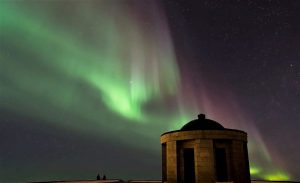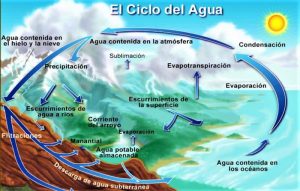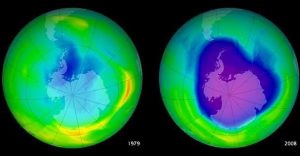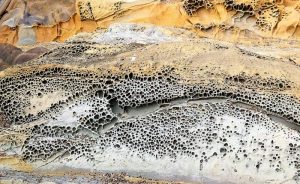Ionosphere
The ionosphere is an atmospheric layer located at an altitude of about 50 kilometers and 500 kilometers. It has an extremely low density and is traversed by strong radiation as ultraviolet light, which in turn is highly ionized. This ionization causes the electronic bonds of the atoms to break down producing ions of different charges. These ions are responsible for naming this layer, in which it can move freely to be lighter than the others. It is located in the middle of the mesosphere and the exosphere. It is also known as the Thermosphere, a name it receives due to the high temperatures it can generate. These temperatures can even reach 1,500 °C.
What is the ionosphere?
The ionosphere is a layer of the atmosphere between the mesosphere and the exosphere that has a very low density and is traversed by radiation as ultraviolet light, causing the atoms' electronic bonds to allow them to move freely.
Ionosphere’s characteristics
- It’s a dynamic system that’s in constant change.
- It has great variations in weather conditions.
- Responsible for allowing electromagnetic emissions.
- It is a monitor of climate change.
Ionosphere’s composition
The ionosphere is composed of two main layers: the lower layer, which has been designated as layer E and is sometimes also known as Heaviside or Kennelly-Heaviside layer and is located between 80 and 112 km above the Earth’s surface reflecting low-frequency radio waves; and the upper layer, also known as F or Appleton layer, which reflects higher frequency radio waves. The upper layer in turn is further divided into an F1 layer, which begins about 180 km above the ground; and the F2 layer, which emerges about 300 km from the surface. It is composed of free electrons and positively charged ions, which makes it have a tenuous gas and a plasma.
Properties
Among the main properties that we can find in the ionosphere, we observe that this layer helps mainly in radio waves reflection that are emitted from earth’s surface, which allows the waves to travel great distances on earth thanks to the ions located in this layer. It disintegrates most meteoroids, at a height between 80 and 110 km, due to friction with the air thus causing meteors or shooting stars. In addition, in the polar regions the particles that the solar wind carries are trapped in the ionosphere giving rise to the famous auroras borealis.
Ionosphere’s function
It allows the transmission of radio waves and prevent meteoroids from impacting the earth are its main functions.
Ionospheric’s layers
According to the density of ionization, the atmosphere has different layers that arise from 90 km. The layers that make up the ionosphere are as follows:
- Layer D: This layer is located 60 kilometers away and only appears during the day. It is very absorbent for frequencies below about 10 MHz, thus protecting the Earth’s surface from much of the space radiation. This is the layer in which the attenuation of radio waves by absorption takes place.
- E layer or Kennelly-Heaviside layer (or Heaviside layer): It is located 80-110 km away. It is an ionized gas layer that reflects medium frequency radio waves and may vary depending on the season of the year. It is a fairly regular layer and its ionization density depends on the angle of radiation caused by the sun. Sometimes a layer can form on top of layer E and is known as sporadic layer, formed by ionized clouds that appear and disappear in the course of hours.
- F-layers or Appleton layers. This layer is located between 180-600 km. The F layers undergo an elevation during the night, so they change their properties of reflection and is responsible for reflecting electromagnetic waves around 300 or 500 Kmsnm.
- F1 layer. Located approximately 180-300 km. It constantly mixes with the E layer due to the fluctuation suffered by both. Its density will also depend on the solar radiation reaching its maximum points at midday. Here the absorption of radio waves takes place.
- Layer F2. It is the highest layer of the ionosphere and is located between 300-600 km away. It starts at dawn and reaches its maximum ionization point between two and three hours after midday.
Temperature
The temperatures that exist in the ionosphere are extremely high, they can even reach 1,500 degrees Celsius, a temperature in which it would be impossible to live.
Importance
The ionosphere is very important for humans because it is where we find both the production and the reflection of radio waves that are emitted from the earth’s surface, which enables these radio waves to travel great distances by means of the particles of electrically charged ions present in this layer. It is also important because it is in this layer where meteoroids are disintegrated and where shooting stars are formed.
How to cite this article?
Briceño V., Gabriela. (2019). Ionosphere. Recovered on 24 February, 2024, de Euston96: https://www.euston96.com/en/ionosphere/










